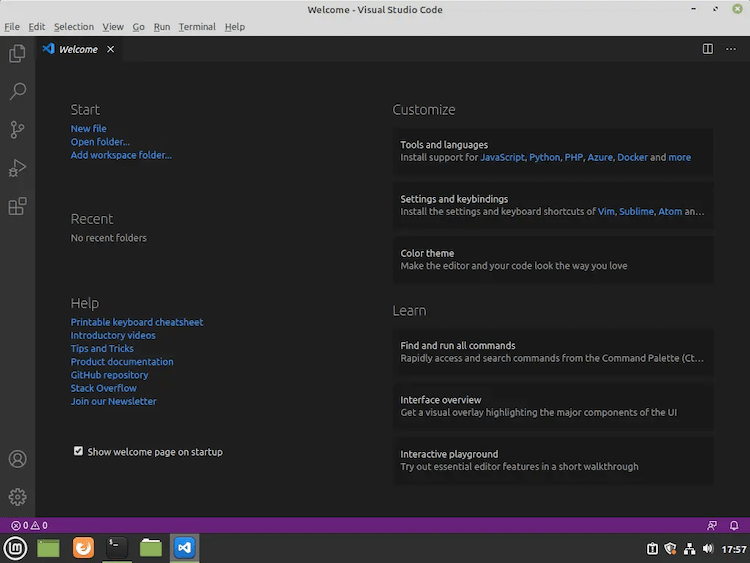How To Install Visual Studio Code on Linux Mint 20

In this tutorial, we will show you how to install Visual Studio Code on Linux Mint 20. For those of you who didn’t know, Visual Studio Code is a free cross-platform source-code editor developed by Microsoft for Windows, Linux, and macOS. VS Code comes with built-in support for JavaScript, TypeScript, and Node.js and has a rich ecosystem of extensions for other languages (such as C++, C#, Java, Python, PHP, Go) and runtimes (such as .NET and Unity). You can easily install extensions to add new languages, themes, debuggers, and connect to additional services
This article assumes you have at least basic knowledge of Linux, know how to use the shell, and most importantly, you host your site on your own VPS. The installation is quite simple and assumes you are running in the root account, if not you may need to add ‘sudo‘ to the commands to get root privileges. I will show you the step-by-step installation of Visual Studio Code on a Linux Mint 20 (Ulyana).
Prerequisites
- A server running one of the following operating systems: Linux Mint 20 (Ulyana).
- It’s recommended that you use a fresh OS install to prevent any potential issues.
- SSH access to the server (or just open Terminal if you’re on a desktop).
- A
non-root sudo useror access to theroot user. We recommend acting as anon-root sudo user, however, as you can harm your system if you’re not careful when acting as the root.
Install Visual Studio Code on Linux Mint 20 Ulyana
Step 1. Before running the tutorial below, it’s important to make sure your system is up to date by running the following apt commands in the terminal:
sudo apt update sudo apt install apt-transport-https
Step 2. Installing Visual Studio Code on Linux Mint 20.
- Installing Visual Studio Code using Snap.
Run the following to install Snap and Visual Studio Code packages:
sudo rm /etc/apt/preferences.d/nosnap.pref sudo apt install snapd sudo apt update
To install Visual Studio Code, simply use the following command:
sudo snap install code --classic
- Installing Visual Studio Code using the official repository.
Now add the key to the system using the commands below:
curl https://packages.microsoft.com/keys/microsoft.asc | gpg --dearmor > microsoft.gpg sudo install -o root -g root -m 644 microsoft.gpg /etc/apt/trusted.gpg.d/
Next, add the repository using the following commands:
sudo sh -c 'echo "deb [arch=amd64] https://packages.microsoft.com/repos/vscode stable main" > /etc/apt/sources.list.d/vscode.list'
Once done, install Visual Studio Code on Linux Mint:
sudo apt update sudo apt install code
Step 3. Accessing Visual Studio Code on Linux Mint.
Once VS Code successfully installed on your Linux Mint system, In the Activities search bar type “Visual Studio Code” and click on the icon to launch the application or copy and paste the below command on your Terminal and execute it:
code

Congratulations! You have successfully installed Visual Studio Code. Thanks for using this tutorial for installing the latest version of Visual Studio Code on the Linux Mint system. For additional help or useful information, we recommend you to check the official Visual Studio Code website.